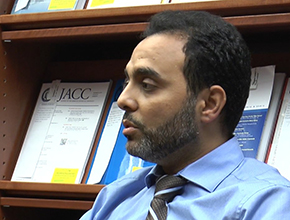How to identify a patient with sepsis in prehospital care? What should the emergency medical services (EMS) pay special attention to?
Waleed Alhazzani: The identification of a septic patient can be very tricky. Sepsis can present with many faces. Sometimes obvious presentations – like low blood pressure, or hypotension, tachycardia, and fever – raise the suspicion of sepsis and then EMS or paramedics should always think about that; however, it is not always that simple. Some patients may present with just a decreased level of consciousness, or just feeling unwell, or with one of the following: tachycardia, high respiratory rate, or fever, in combination or separately.
The key is to have a high index of suspicion and the reason is because in those patients, if they get managed early, we know that the prognosis improves with early management and early detection of sepsis. Therefore, there is no simple answer to your question; however, I think the high index of suspicion [should be paid special attention to]. For instance, patients who are older or patients who are immunocompromised usually tend to present in an atypical fashion. In these cases, you always have to have a high index of suspicion and even try to treat empirically, especially if the blood pressure is low, borderline low, or the patient is tachycardic.
 English
English
 Español
Español
 українська
українська











